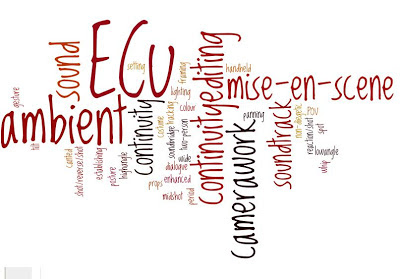Today students doing the thriller brief plan, film, capture and edit their preliminary task.
Continuity
task: filming and editing a character opening a door, crossing a room,
sitting down in a chair opposite another character with whom she/he
exchanges a couple of lines of dialogue. This task should demonstrate
match on action, shot/reverse shot and the 180% rule.



